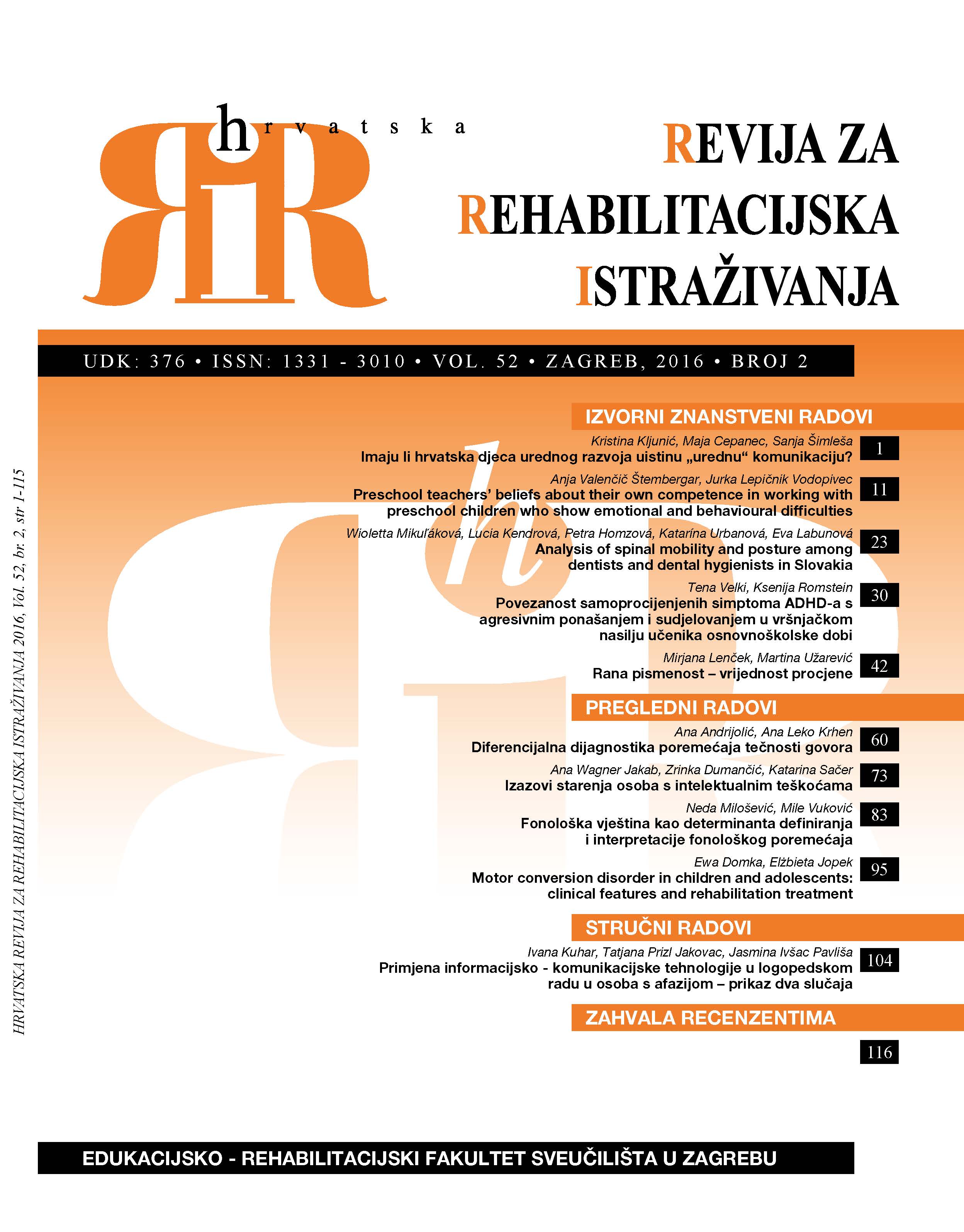Imaju li hrvatska djeca urednog razvoja uistinu „urednu“ komunikaciju?
Do typically developing Croatian preschool children have "typical" communication?
Author(s): Kristina Kljunić, Maja Cepanec, Sanja ŠimlešaSubject(s): Social Sciences, Psychology, Communication studies, Sociology
Published by: Sveučilište u Zagrebu, Edukacijsko-rehabilitacijski fakultet
Keywords: verbal communication; nonverbal communication; pragmatics; preschool children; ADOS-2
Summary/Abstract: The characteristics of verbal communication, nonverbal communication, and pragmatics are largely determined by the culture and social expectations of a particular society. The evaluation of communication features is important in the diagnostics of numerous developmental disorders, particularly autism spectrum disorder, and in recent years the need for the cultural adaptation of both screening and diagnostics scales for autism spectrum disorder (ASD) is emphasized. The aim of this study was to investigate the characteristics of verbal communication, nonverbal communication, and pragmatics in Croatian typically developing preschool children (5- and 6-year-olds), and code them according to the American scale Autism Diagnostic Observation Schedule (ADOS-2, module 3). The results showed that Croatian preschool children show typical features of verbal communication (characteristics of language production and speech), but show some atypical features in non-verbal communication, and, to a large extent, atypical features of pragmatics. The differences are mostly noticed in the amount of spontaneous use of gestures and all pragmatics variables that take into account the amount of initiatives in communication (e.g., spontaneously asking for information or giving information). For example, only 15% of the children in the sample requested information at a frequency that is expected by code 0 (typical behavior) of ADOS-2. Although significant individual differences were observed among the children, the amount of “deviating” behavioral characteristics of non-verbal communication and pragmatics emphasizes the need to review the set of codes and adjust criteria in different cultures.
Journal: Hrvatska revija za rehabilitacijska istraživanja
- Issue Year: 52/2016
- Issue No: 2
- Page Range: 1-10
- Page Count: 10
- Language: Croatian

